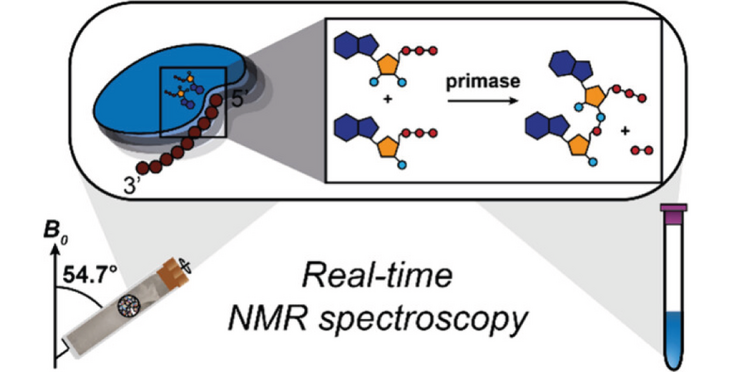The Allain, Lipps and Wiegand labs using solution and solid state NMR could monitor in real time the kinetics of the initial dinucleotide formation by an archael DNA primase. Their experiments revealed also revealed that the helix bundle domain hands over the two nucleotide substrates to the catalytic domain to perform the reaction. Their findings have been published in the article "sdaf" in JACS.
Abstract
Primases are crucial enzymes for DNA replication, as they synthesize a short primer required for initiating DNA replication. We herein present time-resolved nuclear magnetic resonance (NMR) spectroscopy in solution and in the solid state to study the initial dinucleotide formation reaction of archaeal pRN1 primase. Our findings show that the helix-bundle domain (HBD) of pRN1 primase prepares the two substrates and then hands them over to the catalytic domain to initiate the reaction. By using nucleotide triphosphate analogues, the reaction is substantially slowed down, allowing us to study the initial dinucleotide formation in real time. We show that the sedimented protein–DNA complex remains active in the solid-state NMR rotor and that time-resolved 31P-detected cross-polarization experiments allow monitoring the kinetics of dinucleotide formation. The kinetics in the sedimented protein sample are comparable to those determined by solution-state NMR. Protein conformational changes during primer synthesis are observed in time-resolved 1H-detected experiments at fast magic-angle spinning frequencies (100 kHz). A significant number of spectral changes cluster in the HBD pointing to the importance of the HBD for positioning the nucleotides and the dinucleotide.
Read the Publication in JACS (Open Access)
Abstract, figure and title from Wu (2024) J Am Chem Soc published under a CC BY 4.0 license.
